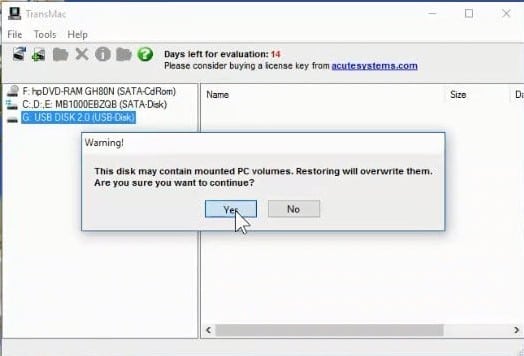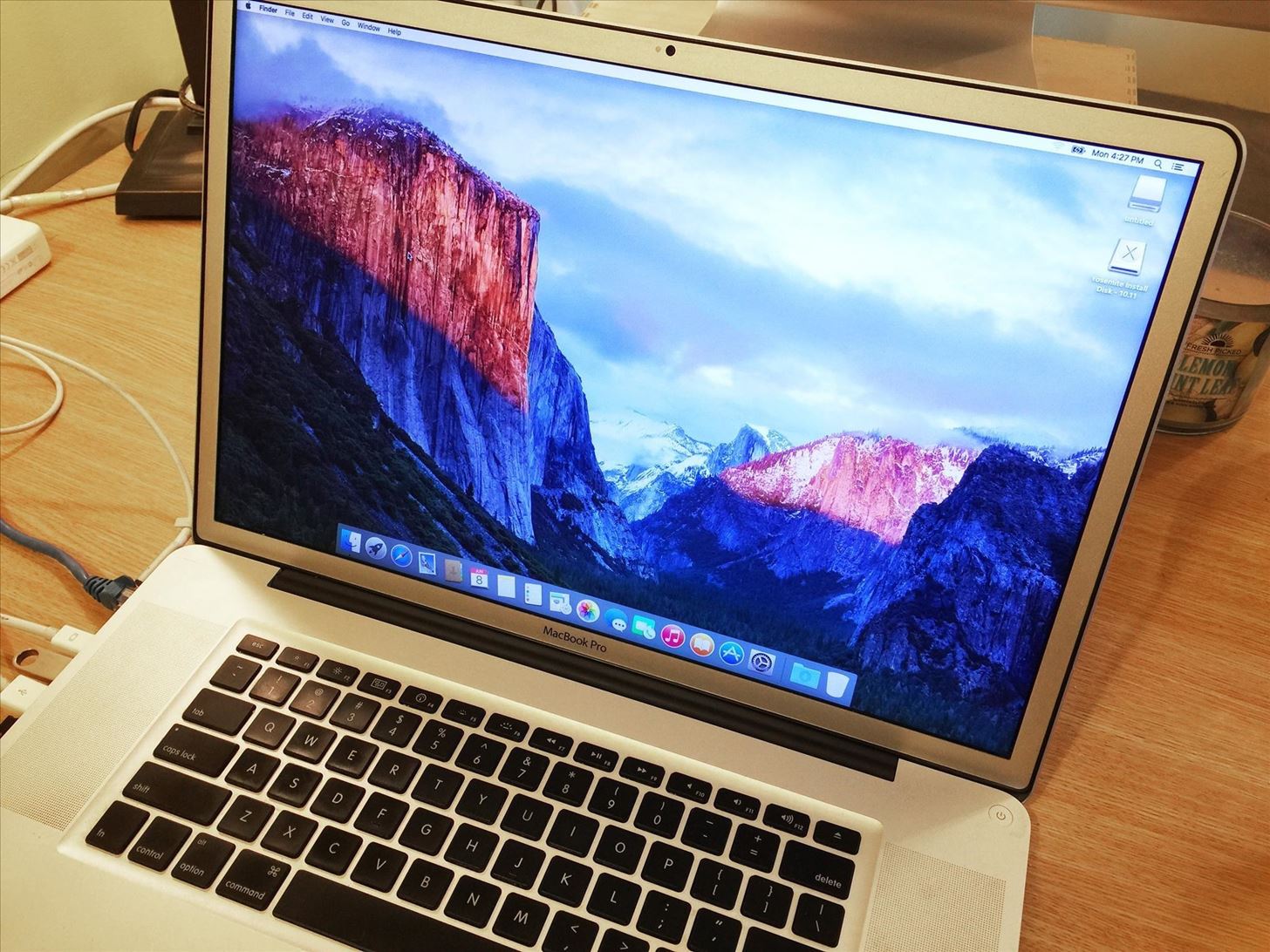


Create Bootable USB Installer for Mac on Windows 10. The first step you should take is formatting your hard drive before you install El Capitan on Mac. And create OS X 10.11 El Capitan bootable USB Installer on PC or create bootable USB for Mac on Windows, before skipping this step. Put the iso on a usb stick (drag it into your mac hard drive and mount it) format your usb stick with the disk utility tool. (Make sure the usb is partitioned as mac bootable then use use the image recovery and put your mounted OS X iso into the source and your usb as the location.) restart your computer while holding down the option key. Select OS X El Capitan installer on the USB flash drive and then press Return to start up the Mac from the installer. Before you can clean install OS X El Capitan, you must first erase the current startup drive that holds the older version of OS X. Select Disk Utility and Continue. It was the 12th major release of the Mac OS X line, since the introduction of the new brand in 2002 by Apple from its previous product line of Mac OS. Download El Capitan OS X is also significant since it’s the last version of Apple Mac OS X releases as its successor Sierra was released in the year 2016 under the brand macOS. El Capitan is a.
These advanced steps are primarily for system administrators and others who are familiar with the command line. You don't need a bootable installer to upgrade macOS or reinstall macOS, but it can be useful when you want to install on multiple computers without downloading the installer each time.
As usual, Apple no longer supply a bootable USB Flash Drive with latest OS X releases - including the new OS X 10.11 El Capitan. Using this tutorial you will. I know how to create a bootable usb, but i dont have an another mac. All i have is just a normal Pc, Windows 10 running with 28 GB HDD and 2 GB Ram. I thought of running mac os in a virtual machine but didnt work. I coudnt find the right dmg or iso file. I tried many ways but none of them worked. Nov 18, 2016 4:20 AM in response to Midori2 In response to Midori2. Not sure what's happening. Open your Applications folder. Right click on your Install OS X El Capitan.app file, choose Show Package Contents and expand the folders for Contents, Resources and see if the createinstallmedia file is in Resources.
What you need to create a bootable installer
- A USB flash drive or other secondary volume formatted as Mac OS Extended, with at least 14GB of available storage
- A downloaded installer for macOS Big Sur, Catalina, Mojave, High Sierra, or El Capitan
Download macOS
- Download: macOS Big Sur, macOS Catalina, macOS Mojave, or macOS High Sierra
These download to your Applications folder as an app named Install macOS [version name]. If the installer opens after downloading, quit it without continuing installation. To get the correct installer, download from a Mac that is using macOS Sierra 10.12.5 or later, or El Capitan 10.11.6. Enterprise administrators, please download from Apple, not a locally hosted software-update server. - Download: OS X El Capitan
This downloads as a disk image named InstallMacOSX.dmg. On a Mac that is compatible with El Capitan, open the disk image and run the installer within, named InstallMacOSX.pkg. It installs an app named Install OS X El Capitan into your Applications folder. You will create the bootable installer from this app, not from the disk image or .pkg installer.
Use the 'createinstallmedia' command in Terminal
- Connect the USB flash drive or other volume that you're using for the bootable installer.
- Open Terminal, which is in the Utilities folder of your Applications folder.
- Type or paste one of the following commands in Terminal. These assume that the installer is in your Applications folder, and MyVolume is the name of the USB flash drive or other volume you're using. If it has a different name, replace
MyVolumein these commands with the name of your volume.
Big Sur:*
Catalina:*
Mojave:*
High Sierra:*
El Capitan:
* If your Mac is using macOS Sierra or earlier, include the --applicationpath argument and installer path, similar to the way this is done in the command for El Capitan.
After typing the command:
Bootable Usb Mac Os X El Capitan
- Press Return to enter the command.
- When prompted, type your administrator password and press Return again. Terminal doesn't show any characters as you type your password.
- When prompted, type
Yto confirm that you want to erase the volume, then press Return. Terminal shows the progress as the volume is erased. - After the volume is erased, you may see an alert that Terminal would like to access files on a removable volume. Click OK to allow the copy to proceed.
- When Terminal says that it's done, the volume will have the same name as the installer you downloaded, such as Install macOS Big Sur. You can now quit Terminal and eject the volume.
Use the bootable installer
Determine whether you're using a Mac with Apple silicon, then follow the appropriate steps:
Apple silicon
- Plug the bootable installer into a Mac that is connected to the internet and compatible with the version of macOS you're installing.
- Turn on your Mac and continue to hold the power button until you see the startup options window, which shows your bootable volumes and a gear icon labled Options.
- Select the volume containing the bootable installer, then click Continue.
- When the macOS installer opens, follow the onscreen instructions.
Intel processor
Download El Capitan To Usb
Mac Os X El Capitan Bootable Usb
Mac Os El Capitan Bootable Usb Windows
- Plug the bootable installer into a Mac that is connected to the internet and compatible with the version of macOS you're installing.
- Press and hold the Option (Alt) ⌥ key immediately after turning on or restarting your Mac.
- Release the Option key when you see a dark screen showing your bootable volumes.
- Select the volume containing the bootable installer. Then click the up arrow or press Return.
If you can't start up from the bootable installer, make sure that the External Boot setting in Startup Security Utility is set to allow booting from external media. - Choose your language, if prompted.
- Select Install macOS (or Install OS X) from the Utilities window, then click Continue and follow the onscreen instructions.
Learn more
Usb Bootable Mac Os El Capitan 10 11 6
Mac Os X El Capitan Dmg Bootable Usb
For more information about the createinstallmedia command and the arguments that you can use with it, make sure that the macOS installer is in your Applications folder, then enter the appropriate path in Terminal:
- Big Sur: /Applications/Install macOS Big Sur.app/Contents/Resources/createinstallmedia
- Catalina: /Applications/Install macOS Catalina.app/Contents/Resources/createinstallmedia
- Mojave: /Applications/Install macOS Mojave.app/Contents/Resources/createinstallmedia
- High Sierra: /Applications/Install macOS High Sierra.app/Contents/Resources/createinstallmedia
- El Capitan: /Applications/Install OS X El Capitan.app/Contents/Resources/createinstallmedia
Bootable Usb Mac Os El Capitan
A bootable installer doesn't download macOS from the internet, but it does require an internet connection to get firmware and other information specific to the Mac model.
Created a bootable USB with El Capitan installer
booted from it, erased my MBP (mid 2009), clean install from USB installer
decided to use migration assistant, most apps not working plus all the clutter from pre clean install
decided to do another clean install but MBP won't boot from USB and uses the recovery version instead.
tried to get Maverick back and basically ended up with a non-working MBP that went into a boot loop
did a reinstall from MAS, ended up DLing the entire Installer again, went to bed and in the morning and 'working'
MBP again, plus all the clutter and non working apps.
Made a new bootable USB key using terminal and yes it finished and yes it said bootable at the end as well as in Disk Utilities.
However when trying to boot from USB, start+Option, or start+cmd+r still no sign of the USB stick, which i guess would leave me
with a non clean install again.
Any help, suggestions.....?
Cheers
Ralf
MacBook Pro (13-inch Mid 2009), OS X El Capitan (10.11)
Mac Os El Capitan 10.11 Download

Usb Bootable Mac Os El Capitan Download
Posted on Oct 4, 2015 7:57 AM



